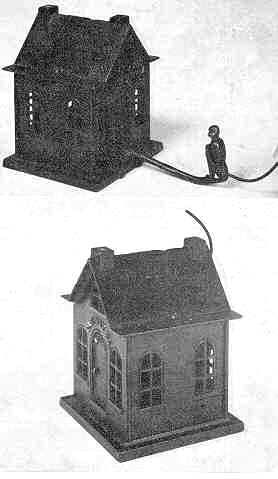Rival Bank
by F.H. Griffith - HOBBIES Magazine - April, 1974
 Mechanical banking in 1973 was nothing short of spectacular. There
were a number of new finds, including the very interesting Saluting Sailor. Then, after
all the years, three British Lions, each in fine condition. Who would have thought not
one, but two Seek Him Frisk Banks, a very rare, great action item could possibly turn up
in the same year. A very nice example of the rare Bank Teller showed up in California.
Strangely enough the last one came to light in the same State, but this was some 20 odd
years ago. Then after all the years that mechanical banks have been collector’s items
the first known example of the Japanese Ball Tosser was found in Pennsylvania. And if all
that isn’t enough, how about a Rival Bank, which, to the best of the writer’s
knowledge, is the second one known to exist. This is an early rare bank with a puzzling
name and of necessity at this time No. 234 in the numerical classification.
Mechanical banking in 1973 was nothing short of spectacular. There
were a number of new finds, including the very interesting Saluting Sailor. Then, after
all the years, three British Lions, each in fine condition. Who would have thought not
one, but two Seek Him Frisk Banks, a very rare, great action item could possibly turn up
in the same year. A very nice example of the rare Bank Teller showed up in California.
Strangely enough the last one came to light in the same State, but this was some 20 odd
years ago. Then after all the years that mechanical banks have been collector’s items
the first known example of the Japanese Ball Tosser was found in Pennsylvania. And if all
that isn’t enough, how about a Rival Bank, which, to the best of the writer’s
knowledge, is the second one known to exist. This is an early rare bank with a puzzling
name and of necessity at this time No. 234 in the numerical classification.
The fine, original Rival shown has found a good home in the collection of Wally Tudor of Chicago, Ill. Wally is really interested in mechanical banks, he goes after them, offering good, tough competition in this specialized field of collecting. One of his highlights for 1973 was the acquisition of the Rival Bank and he is to be congratulated on the addition of this rare mechanical to his collection.
The Rival was patented by Daniel James McLean of Reading, Pa., May 21, 1878. The bank, as manufactured, is practically identical to the patent drawings with one exception. In the drawings the spring or accentuating mechanism that causes the monkey to operate is shown in three forms, all of which go through the building front to back. The bank as produced simply has a spring at the pivot end of the arm, the monkey being an integral part of this arm at the other end. As to the somewhat puzzling name Rival, it is probably best explained and analyzed by quoting a part from the text of the patent.
"The advantages of my (McLean’s) toy bank are, first that it holds more money than any other bank of the same size, on account of the small space taken up by the entrance chamber chute; secondly, that any size of coin from a cent to a trade-dollar, may be deposited with equal facility; and, lastly, that the working of the figure will cause great amusement to the children."
So in effect we can judge from this statement of the three advantages that the bank rivaled (equaled or excelled) any other mechanical bank made at the time. McLean in his patent also made a point that coins could not interfere with any working mechanism of the bank and that a larger interior space was provided than was generally the case in toy banks with operating figures. So taking everything into account with respect to the bank being named Rival, the text of the patent papers, in part, would certainly logically furnish reason enough.
The bank shown is in very nice original condition with no repairs. The roof is red and the rest of the bank is basically a brown color. The monkey has white eyes and a red mouth. The name "Rival" is on the front of the bank, Figure 1, and the patent date "May 21, 1878" is on the back, Figure 2.
The operation of the bank is simple but with good action. The monkey is pushed, or if you will, pulled down into position as shown in Figure 1. A coin is placed in the provided slot formed by his arms. Release his tail and up he goes depositing the coin into the bank. The monkey’s head hits a bumper inside the chute which serves the double purpose of releasing the coin and absorbing the shock. The normal position of the monkey is shown in Figure 2 with his tail curving over the front chimney. The bank is a particularly fine early casting and the monkey with his head turned as though looking at the operator is a point of interest.
And, before we forget it, there were many other fine mechanical banks turned up in 1973 by various collectors. We only highlighted a few of the outstanding finds in our first paragraph, in the foregoing.
